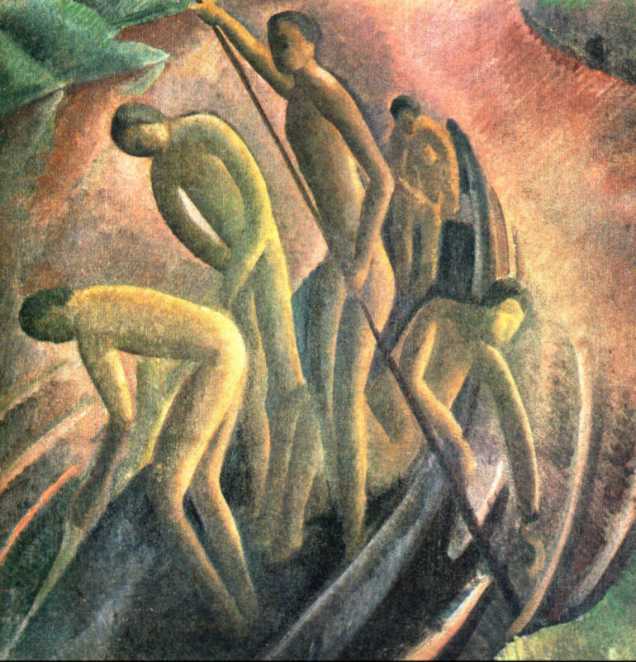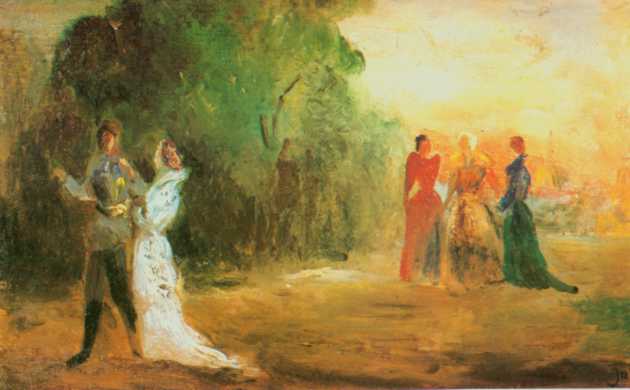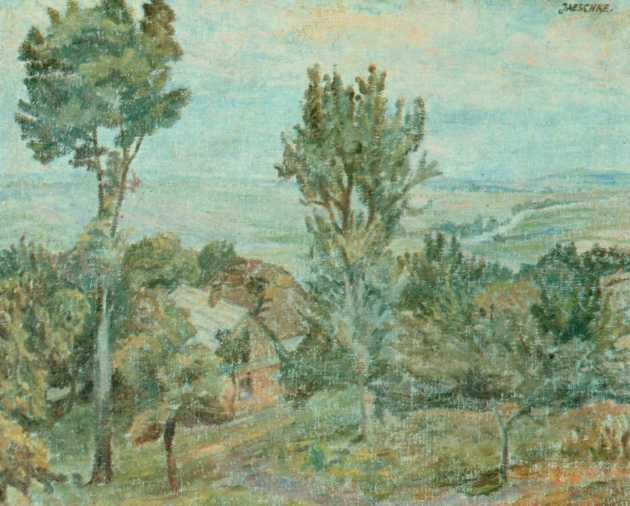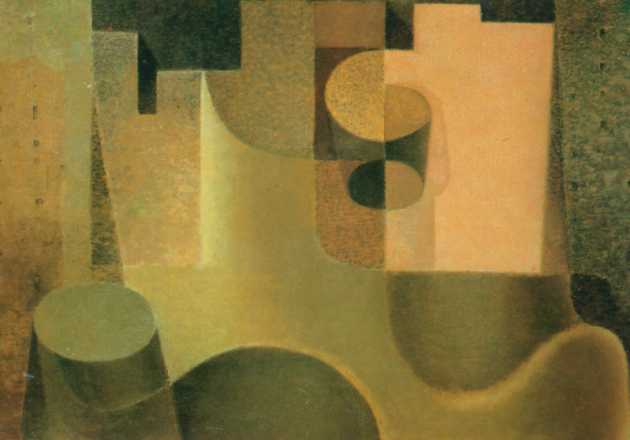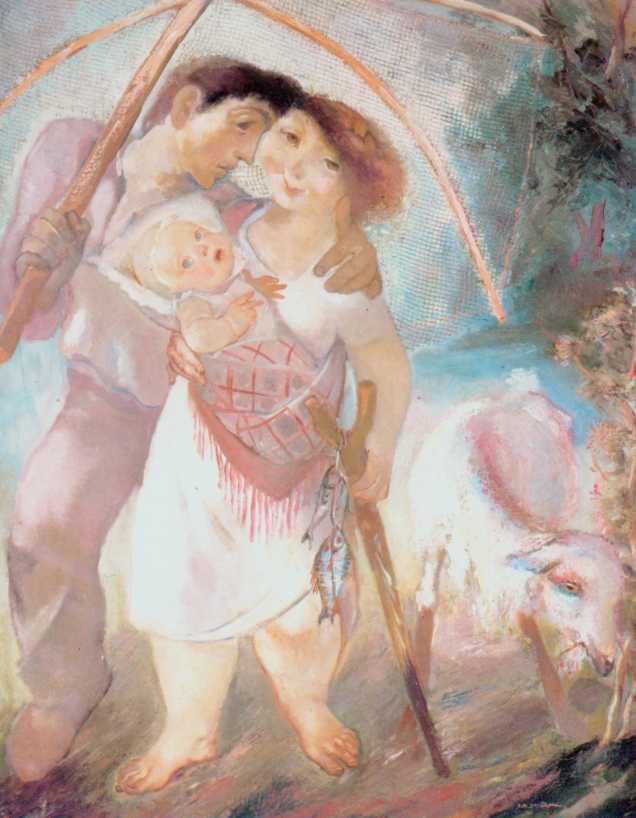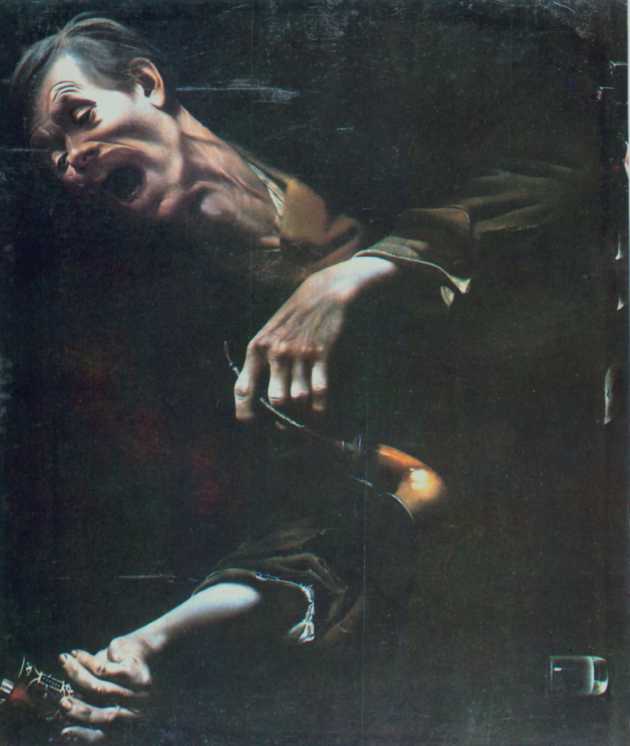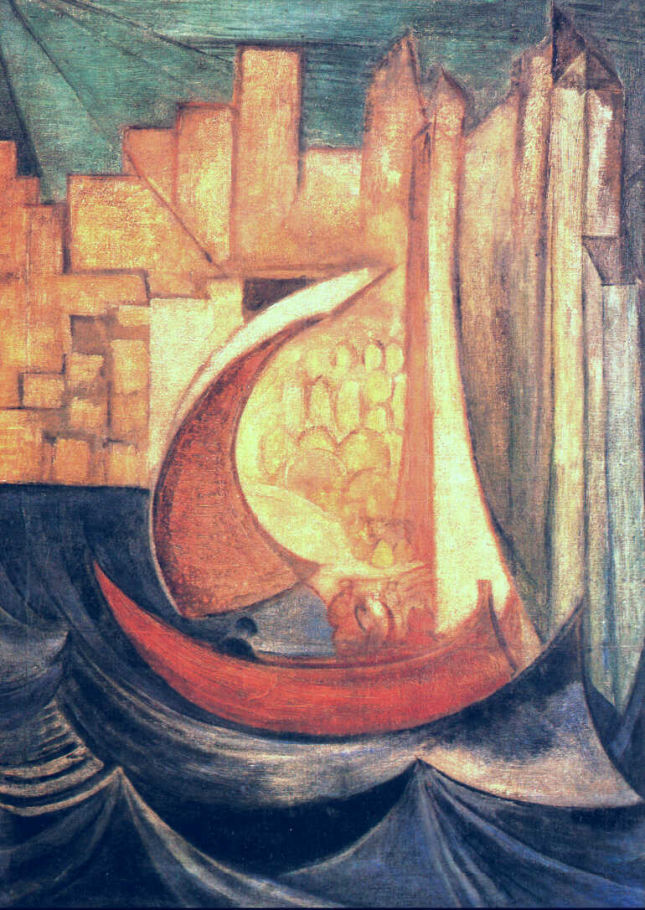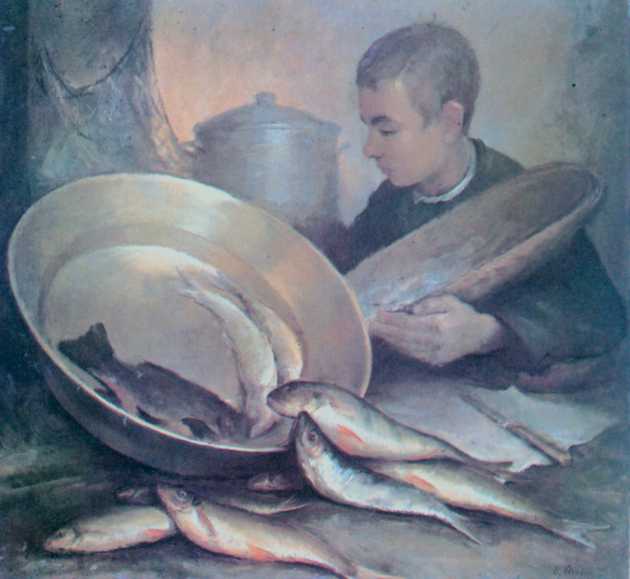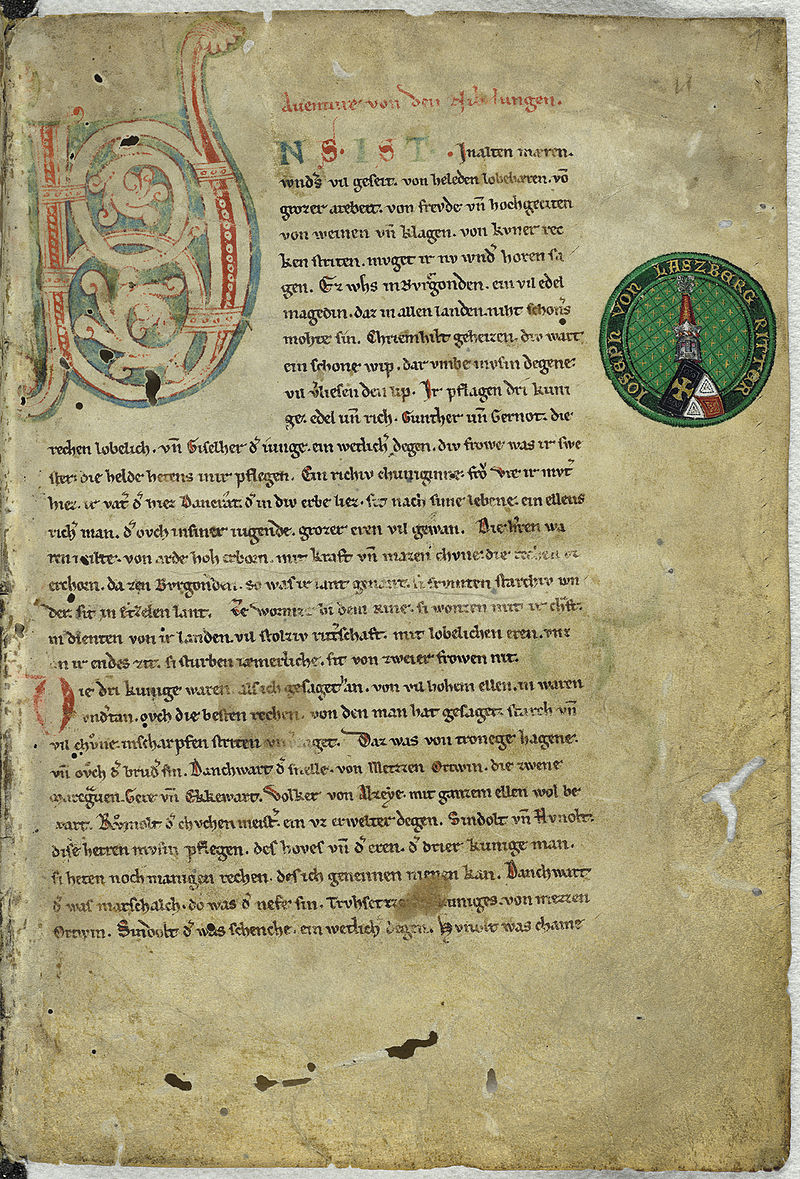Painting – Pre-Raphaelite.
Pre-Raphaelite (The. The Pre-Raphaelite Brotherhood) – an art society founded in London in 1848 year by students of The Royal Academy of Art: Johna Everetta Millais, William Hunt, Dante Gabriel Rossetti and his brother William Michael, later joined by the painters James Collinson, literat Frederick George Stephens, sculptor Thomas Woolner and a little later Walter Hower Deverell and Charles Alliston Collis. The painter Ford Madox Brown was also associated with the group.
Group activities.
They were against the Victorian, purely academic art and preached a program of morally revived art, modeled on the works of the masters of the early Italian Renaissance. The group's program was based on the views of John Ruskin and the idea of renewing art by drawing on the works of Italian early Renaissance masters and William Blake. On the one hand, they dreamed of the return of the Middle Ages, on the other, they tried to face the problems of their times. Their work was related to the activities of the German Nazarene group.
The Pre-Raphaelite trend spread throughout Europe, found many followers in France, Belgium but also in Central Europe. He was an important element of the emerging craftsmanship renewal movement in Great Britain – Arts&Crafts.
From 1848 r. young artists copied engravings at the Cyclographic Society (Cyclographic Society) and they met at Hunt's studio on Cleveland Street or at Millais' family home.
Rossetti and his students: Morris and Burne-Jones together will give rise to the applied arts, setting up a shop with everyday items designed by him.
Their activity did not concern only painting. His reflections on art and poems, referring to Petrarch and medieval English ballads, they put in writing “The Germ” (Embryo), of which they managed to release only four numbers. Painters Walter Crane and William Morris were also associated with the Brotherhood, which in 1890 opened a printing house in the suburbs of London, with a resolution to restore the beauty of the book. He saw the reason for the decline of the book in modern inventions and mass production. At Morris's printing house, the prints were folded by hand and pressed on manual presses. The Pre-Raphaelite ideal was a Renaissance book and beautifully illuminated medieval codices, so they used Renaissance ornamental motifs, and for typesetting, they used a font modeled after Jenson's antique. They focused on the look and finish of the book, the text was often less important.
Very group, ended their activities in 1853.
Group name.
The name of the group refers to Italian painters of the 14th and 15th centuries, such as Giotto and Fra Angelico, which the members of the fraternity wanted to imitate. They wanted to restore in painting and promote artistic assumptions and practice in criticism (like for example. fidelity to nature, sincerity), which they considered characteristic of Italian art before Raphael.
Stylistic features of Pre-Raphaelite art.
Pre-Raphaelites take their themes from the Bible and Arthurian legends and complement them with literary ideas from the works of poets such as John Keats and Alfred Tennyson, Shakespeare's dramas or mystical allusions. They liked to use symbols, they painted realistically, however, they always included some extra in their paintings, hidden content. They wanted to go back to that “real art”, which is beautiful, but it also carries a message. And their favorite motive was beautiful women – they often created images of legendary heroines – Ofelii, Laurels (about the facial features of painters' wives). Also nature presented in the smallest details is their source of inspiration. The Pre-Raphaelites were inspired, as did the Nazarenes who preceded them, quattrocento and gothic art.
The characters are presented without omitting the smallest detail in their appearance. Pre-Raphaelite works are characterized by the avoidance of stereotypical representations of figures. The composition is usually a mixture of archaism and naturalism. Their paintings are in the spirit of Romantic symbolism, mysticism, naive sentimentality, characterized by a meticulous treatment of realities, sharp color palette.
Their paintings are an almost photographic representation of reality, however, they are far from realism. The meticulousness with which they treat details makes the most fantastic events and the least probable characters believable. The Pre-Raphaelites were able to transport their audience into the world of fairy tales and give them a longed-for rest from the industrialized reality, which no longer held any secrets.
The paintings are full of love symbolism and didacticism. Like their predecessors, they decided to refresh social religiosity. They depict the saints with reverence but without pathos and artificiality. Mimo that, and perhaps this is the reason why their work is truly mystical. Rossetti was particularly fond of religious themes. The later work of the Pre-Raphaelites is a prelude to symbolism.
Landscape in Pre-Raphaelite Art.
The landscape was a key element of Pre-Raphaelitism. The Pre-Raphaelites tried to paint it, according to Ruskin's postulates, which presented its main assumptions on the pages of five volumes “Contemporary Painters”, in the truest way possible, completely opposed to academic convention and tradition. They made a real revolution going outdoors. Their nature hides a huge emotional charge. She is not watched, but survives. It was mainly the Millais who were interested in her, Hunt i Brown.
New technique.
Nineteenth-century painting traditionally used bitumen, brown dye, which allowed to obtain soft and dark colors. Deep, brown shade was broken with contrasting light, formed after the application of the white dye. Pre-Raphaelites created in the technique used in wall painting, adapted to your needs. Thanks to it, they amazed with the purity and intensity of colors. The chosen way of painting required flawless selection of colors and shades, because once a mistake was made, it was impossible to cover it up with successive layers of paint.
Artist list.
Pre-Raphaelite Brotherhood:
James Collinson (painter)
William Holman Hunt (painter)
John Everett Millais (painter)
Dante Gabriel Rossetti (painter, poet)
William Michael Rossetti (critic)
Frederic George Stephens (critic)
Thomas Woolner (sculptor, poet)
People associated with the Pre-Raphaelite Brotherhood:
Lawrence Alma-Tadema (painter)
John Brett (painter)
Ford Madox Brown (painter, designer)
Edward Burne-Jones (painter, designer)
Charles Allston Collins (painter)
Frank Cadogan Cowper (painter)
Walter Howell Deverell (painter)
Arthur Hacker (painter)
Arthur Hughes (painter, illustrator)
Jane Morris (model)
May Morris (designer)
William Morris (designer, writer)
Christina Rossetti (poetess)
John Ruskin (critic)
Anthony Frederick Augustus Sandys (painter)
Thomas Seddon (painter)
Elizabeth Siddall (painter, poet and model)
Simeon Solomon (painter)
Marie Spartali Stillman (painter)
Algernon Swinburne (poet)
Henry Wallis (painter)
William Lindsay Windus (painter)
